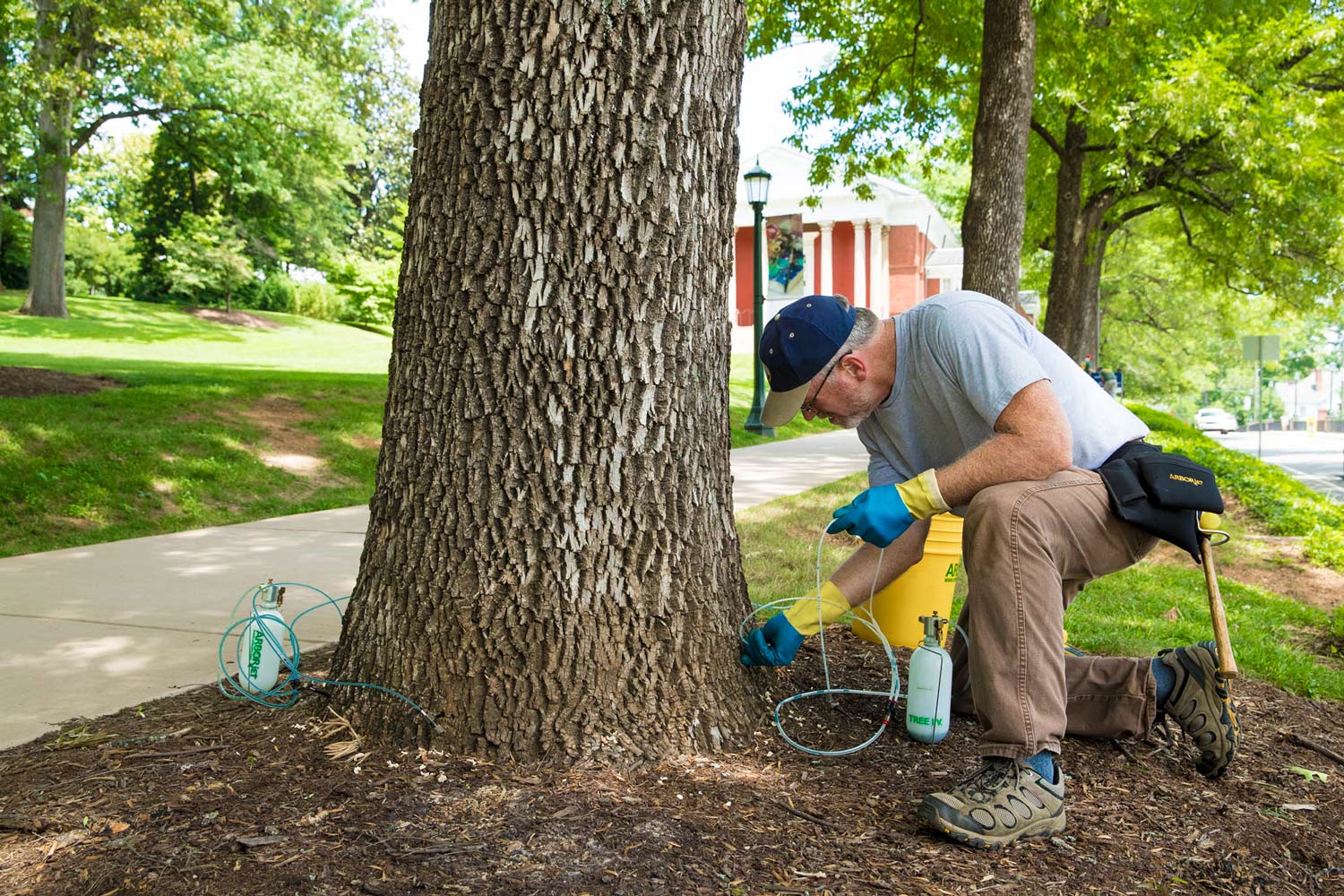The ash tree is under attack.
The emerald ash borer, which has already devastated trees in large areas of North America, is making its way to Central Virginia, and University of Virginia landscape superintendent Richard Hopkins said it is not a matter of “if” but “when” the invasive Asian pest comes to Grounds.
The bright green-colored winged insect, about one-third of an inch long, lays its eggs under the bark of the ash. Once the eggs hatch, the larvae of the ash borer burrow through the tree’s cambium layer, effectively cutting off the nutrients that flow up from the roots. The larvae then develop into the winged versions that burst out of the tree’s bark and restart the cycle, leaving dead trees in their wake.
While ash trees in the forest have been devastated, the University is taking steps to protect its landscape ash trees. Recently, Sten Cempe and his crew from Big O Tree and Lawn Service of Stuart’s Draft were on Grounds for two days inoculating ash trees, drilling holes near the base of the trees and injecting a drug, emamectin benzoate, as close as possible to the root flare so it will spread evenly in the canopy. The chemical, marketed under the trade name Tree-age, is supposed to kill the borers when they attack the tree, without harming the ash. The University’s ash trees are on a revolving schedule of inoculations every two years.
“Because the pest is imported, there are no natural predators for it,” Cempe said. “The idea is to preserve the landscape trees until a natural predator can be found.”
Ash trees in Asia have a natural resistance to the borer, Cempe said, so trees there are weakened when attacked, but generally not killed. The borers also have natural predators in Asia to help keep the population in check.

The emerald ash borer may not look fearsome, but the invasive species has no natural predators in the U.S. and is wreaking devastation on the nation’s ash trees.
The University’s hundreds of ash trees have a commanding presence on Grounds, making up about 70 percent of the trees on the Lawn, along Rugby and McCormick roads, the East Range and Carr’s Hill. Some of the ash trees on the Lawn are more than 100 years old, Hopkins said.
The inoculations ultimately are only a temporary reprieve; it is becoming an issue of when, not if, the ash trees will succumb. Hopkins and Cempe said only landscape trees are being preserved, and it is already difficult to purchase replacement ash trees because nurseries are not stocking them. While they make up only a small percentage of the native forest, ash trees are already going the way of the American chestnut tree, the elm and the hemlock.
“We can’t save them,” Hopkins said. “Ultimately, we can lengthen their lives, but either the borers or old age will get them and there will be no new ash trees to plant to replace them.”
“People have an emotional attachment to trees,” Cempe acknowledged. “They are part of the family, and homeowners are going to have to make the decision if they are going to try to save the trees on their property.”
Cempe said if a tree is more than 30 percent infested, then the best thing to do is cut it down and remove it before the borers spread to other ash trees.
As ash trees on Grounds die of old age, University landscapers are looking to replace them with other species. Hopkins said Facilities Management is working with the University’s landscape architects and the Arboretum and Landscape Committee to determine what new trees to plant on the Lawn. Maple and linden trees are part of the current Lawn mix.

Media Contact
Article Information
June 30, 2017
/content/uva-inoculates-ash-trees-against-emerald-borer

